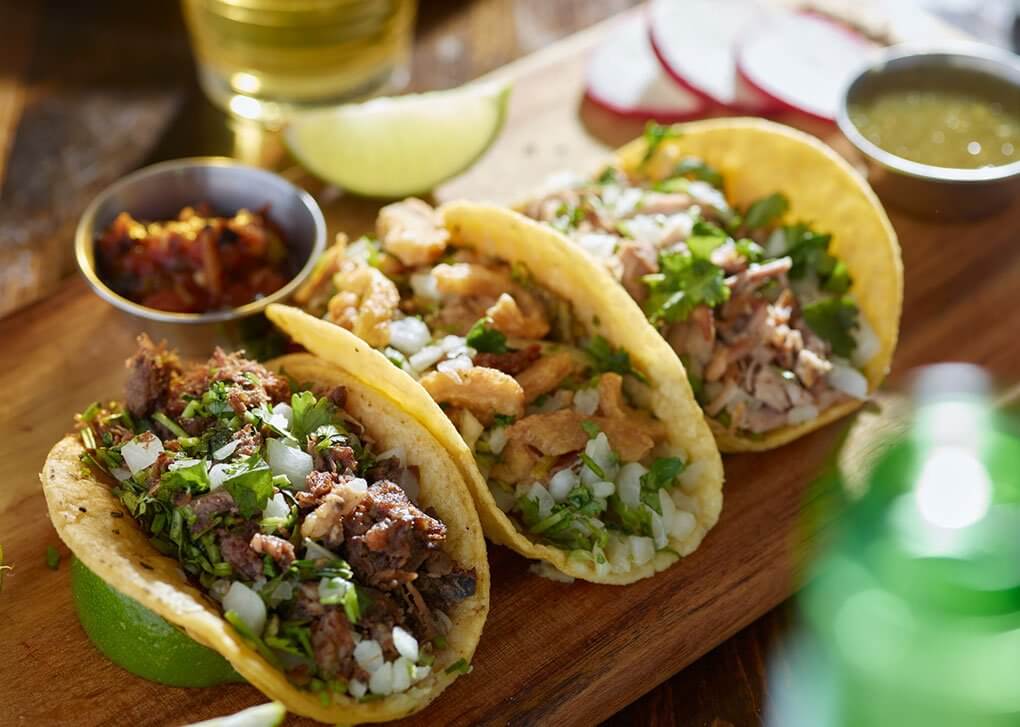Tacos may seem a ubiquitous item on American menus, but until 2008 less than one-fifth of restaurants in this country featured them. Beginning in 2008, tacos took off—driven by food trucks, immigrant growth and experimentation. The advancement of tacos since then has been steady—and so has the innovation within the format. Some of the “new” tacos are faithful to Mexican culinary traditions, but many are driven by chef innovations that thoughtfully and intentionally combine the taco format with elements pulled in from a number of global cuisines or popular American flavor systems.
5 Ways to Taco Glory
Considering tacos for your menu, or looking to renovate your current taco program? Options abound, with these five categories capturing the fastest growing trends in tacos:
1. Produce
Tacos have not been immune to the produce-forward movement. Today, some are either filled with plant-based ingredients to create unique and craveable vegetarian and vegan options or inclusive of unique produce to offer complexity and complement the starring animal protein. Play with seasonal produce and take into account regionally appropriate options, but also consider these top trending taco ingredients: kale, cauliflower, Brussels sprouts, butternut squash and peas.
2. Sauces/Condiments
As with all formats, sauces are some of the easiest ingredients with which to experiment. If nothing but the sauces change they can shift the flavor experience while keeping the item approachable for less adventurous patrons. Furthermore, sauces are some of the first ingredients from world cuisines to enter the U.S. market and register with consumers. Some of the most on-trend sauces in the taco category include: Sriracha, Sriracha aïoli, lime vinaigrette, kimchee and pineapple salsa.
3. Proteins
While plant-based proteins are certainly trending across foodservice, animal proteins remain a key element to many taco creations. There is, quite literally, no limit to the types, varieties and preparations of proteins that can be used in tacos. Price and availability must be taken into consideration, but some of the fastest growing proteins within tacos: are seared ahi tuna, Atlantic cod, pork (in all cuts), lamb and blackened shrimp.
4. Cheeses
Many cheese currently trending in tacos are influenced by Mexican culinary traditions, others are driven more by overall popularity beyond that format. When creating within the taco category, first turn to cheeses currently featured on the menu to avoid stock and ordering complexity, but these growing cheeses featured in tacos may spark inspiration: goat cheese, Cotija, blue, queso fresco and Parmesan.
5. Herbs and Spices
Arguably, flavor begins with the right balance of spices and herbs. Mexican cuisine offers many familiar and less commonly known spices and herbs to consider, but chefs need not limit their inventiveness to the more traditional options. As ingredients from proteins and cheeses to sauces and vegetables evolve, so too will spices and herbs. The fastest growing among these flavor builders are: fennel, coriander, saffron, oregano and marjoram.










